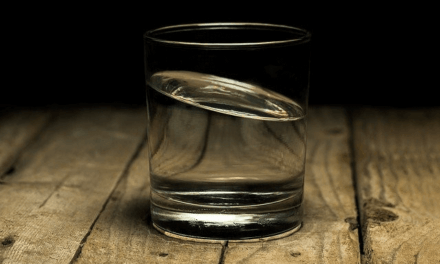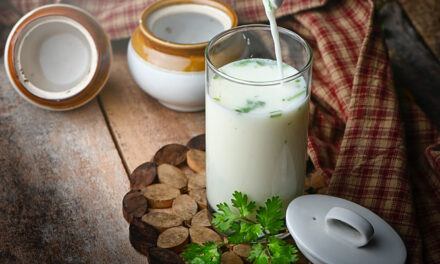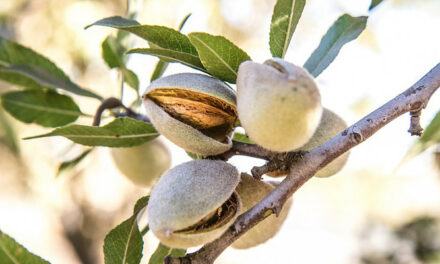In the quest for better health and wellness, people battling with chronic diseases such as diabetes, hypertension, and obesity, always seek dietary alternatives. These alternatives can bring about a positive change in their overall well-being. One such option gaining attention is the choice between Celtic salt and Hawaiian salt, and the view of the best option out of these two salts.
These two distinct salts not only offer unique flavours but also possess potential health benefits. No question!
In this article, we take a captivating and informative journey as we delve into the world of Celtic and Hawaiian salts to explore their origins, nutritional profiles, mineral constituents, and potential impact. This article is relevant to people who are fit and healthy as well as those dealing with chronic disease.
Let’s start with Celtic Salt…
What is Celtic Salt? The Origin and Traditional Practices
Celtic sea salt, or grey salt, is considered to be one of the finest salt in the world. It is harvested from seawater in the estuaries close to the town of Guerande, Brittany. Brittany is the northwesternmost region in France that extends out towards the Atlantic Ocean.
The name Celtic is derived from a harvesting method invented by the Celts who settled in Brittany. As the tide comes in, the sea water is allowed to settle in shallow seawater pools. These pools are then carefully managed, allowing the seawater to evaporate naturally under the sun and wind. After which, very dense, rich brine is formed.
Thereafter, the brine is then channelled into the saltwater pools that have the native grey-coloured clay in them. The clay from the silt and the salt pools contribute significantly to the salts’ characteristic grey colour. Next, the brine crystallizes via solar evaporation, leaving behind pure crystalline salt.
Notably, the production of Celtic salt embraces traditional Celtic methods.
For instance, the salt is harvested with wooden rakes by sweeping the top of the evaporating seawater. Salt harvesters oversee salt production, carefully ensuring that the process remains in harmony with nature (Barakat et al., 2015).
Mineral Composition Of Celtic Salt
As observed earlier, Celtic salt is extracted without chemicals. Thus, it is not stripped of its minerals during processing.
As a result, Celtic salt has a very extensive mineral and elemental profile. Its range of minerals is broader as compared to refined table salt. Therefore, it is a popular choice for those seeking a more natural and mineral-rich salt option.
The mineral composition, however, can vary slightly depending on the specific location where it is harvested.
Below is a table that shows some of the predominant minerals in Celtic salt and their compositions.
|
Mineral |
mg per1/4 tsp |
% |
Mineral |
mg per 1/4 tsp |
% |
|
Chloride |
601.25 mg |
50.90% |
Zinc |
0.03 mg |
.00275% |
|
Sodium |
460 mg |
33.00% |
Copper |
0.02 mg |
.00195% |
|
Sulphur |
9.7 mg |
0.820% |
Erbium |
0.02 mg |
0.00195% |
|
Magnesium |
5.2 mg |
0.441% |
Tin |
0.02 mg |
0.00192% |
|
Potassium |
2.7 mg |
0.227% |
Manganese |
0.02 mg |
0.0018% |
|
Calcium |
1.5 mg |
0.128% |
Cerium |
0.02 mg |
0.00172% |
|
Silicon |
1.2 mg |
0.052% |
Fluoride |
0.01 mg |
0.00109% |
|
Carbon |
0.6 mg |
0.049% |
Rubidium |
0.01 mg |
0.00084% |
|
Iron |
0.14 mg |
0.012% |
Gallium |
0.01 mg |
0.00083% |
|
Aluminium |
0.11 mg |
0.0095% |
Boron |
0.01 mg |
0.00082% |
|
Praseodymium |
0.04 mg |
0.0029% |
Titanium |
0.01 mg |
0.00079% |
|
Strontium |
0.03 mg |
0.00275% |
Bromine |
0.01 mg |
0.00071% |
Sodium and Chloride are the most abundant minerals in Celtic salts, accumulating to about 83%. The minerals in small amounts, such as zinc, manganese, and copper, are known as trace minerals, and Celtic salt of rich in them.
Now, let’s turn on to Hawaiian salt.
What Is Hawaiian Salt? The Origin and Production
Hawaiian salt refers to salt that is traditionally produced in the Hawaiian Islands. This salt is a blend obtained from the Pacific Ocean in Kona Hawaii, and Red Alaea volcanic clay that occurs naturally in Kauai, and ancient Hawaii Island.
This salt holds cultural and historical significance in Hawaiian cuisine and is commonly used in various dishes (Manoharan & Kaliaperuma, 2022).
Hawaiian salt is typically made through the process of evaporating seawater of these Pacific islands in shallow pools called salt pans. These salt pans are constructed near the coastlines. Sun and wind evaporate the water, leaving behind the salt crystals. The salt pans are carefully built to allow for controlled evaporation and prevent contamination.
The resulting salt crystals from this process can vary in colour and texture. Some varieties of Hawaiian salt are red or pink due to the presence of iron oxide in the soil or algae that grow in the salt pans. Other types of Hawaiian salt are white or grey.
One famous type of Hawaiian salt is called Red Algae Salt. The name comes from the reddish-brown volcanic clay called “Alaea”, which is mixed with salt, giving it its unique colour and flavour.
Hawaiian salt is known for its distinct flavour and mineral content, which can enhance the taste of various foods. It is often used as a finishing salt, sprinkled on dishes just before serving, to add a final touch of flavour and texture.
Varieties Of Hawaiian Salt
Hawaiian salt comes in different varieties based on factors such as mineral content, colour, and additional ingredients. Some popular types include:
- Alaea Salt
This type of Hawaiian salt gets its red colour from the addition of volcanic clay called “alaea”. It is often used in traditional Hawaiian dishes and has a distinct flavour.
- Black Lava Salt
Black Lava Salt is infused with activated charcoal, giving it a striking black colour. It is mainly used to detoxify.
- White Hawaiian Salt
This is the plain, unaltered salt that is harvested from the salt pans without any additional ingredients. It retains its natural white colour and is versatile in its culinary applications.
Today, traditional methods of Hawaiian salt production are still practised by some individuals and organizations in Hawaii. Additionally, Hawaiian salt is also commercially produced using modern techniques to meet the demand for this unique and sought-after ingredient.
Mineral Composition Of Hawaiian Salt
Hawaiian salt, like other natural salts, contains various minerals and trace elements that contribute to its flavour and composition. The mineral composition of Hawaiian salt can vary depending on factors such as the location of the salt pans and the specific type of salt being produced.
Hawaiian salt has a mineral profile of more than 80 minerals that are considered healthy. Like in Celtic Seal Salt, the main minerals are sodium and chlorine, but on the contrary, Hawaiian salt contains significant amounts of iron.
The iron content present in the salt aids in restoring iron levels for a person with a deficiency. And, this salt is a particularly healthier option for females with regular low iron levels.
This salt has low levels of trace irons, such as calcium, potassium, magnesium, sulphur, and phosphorous, among others.
Most sea salts contain 95% of Sodium chloride and about 5% trace minerals. However, Hawaiian salt contains 84% sodium chloride and 16% trace minerals. The trace minerals commonly found in Hawaiian salt are potassium, magnesium, calcium and iron (Manoharan & Kaliaperuma, 2022)
It’s important to note that the specific mineral composition can vary depending on the location and the specific conditions of salt production. Additionally, the mineral content of Hawaiian salt may differ slightly from traditional sea salts due to the unique environmental factors and mineral-rich volcanic soil found in the Hawaiian Islands.
Comparison Of Celtic Salt vs Hawaiian Salt
Here’s a comparison table of Celtic Salt vs. Hawaiian Salt.
|
Aspect |
Celtic Salt |
Hawaiian Salt |
|
Origin |
Brittany, France |
Hawaiian Islands (Kona, Kauai, etc.) |
|
Harvesting Method |
Evaporation in seawater pools with clay |
Evaporation in salt pans near the coast |
|
Traditional Practices |
Wooden rakes, harmony with nature |
Traditional and modern production |
|
Color Variations |
Grey |
Red, pink, white, grey |
|
Special Varieties |
None |
Alaea Salt, Black Lava Salt, White Hawaiian Salt |
|
Mineral and Trace Element Content |
Extensive mineral profile |
Rich in trace minerals, particularly iron |
|
Sodium and Chloride Content |
Predominant (about 83%) |
Predominant (about 84%) |
Here’s a detailed comparison of the trace mineral profiles between Celtic Salt and Hawaiian Salt
|
Trace Minerals |
Celtic Salt |
Hawaiian Salt |
|
Calcium |
1.5 mg per 1/4 tsp (0.128%) |
Low levels |
|
Magnesium |
5.2 mg per 1/4 tsp (0.441%) |
Low levels |
|
Sulphur |
9.7 mg per 1/4 tsp (0.820%) |
Low levels |
|
Potassium |
2.7 mg per 1/4 tsp (0.227%) |
Low levels |
|
Silicon |
1.2 mg per 1/4 tsp (0.052%) |
Low levels |
|
Carbon |
0.6 mg per 1/4 tsp (0.049%) |
Not specified |
|
Iron |
0.14 mg per 1/4 tsp (0.012%) |
Significant amounts |
|
Aluminium |
0.11 mg per 1/4 tsp (0.0095%) |
Not specified |
|
Praseodymium |
0.04 mg per 1/4 tsp (0.0029%) |
Not specified |
|
Strontium |
0.03 mg per 1/4 tsp (0.00275%) |
Not specified |
|
Zinc |
0.03 mg per 1/4 tsp (0.00275%) |
Not specified |
|
Copper |
0.02 mg per 1/4 tsp (0.00195%) |
Not specified |
|
Erbium |
0.02 mg per 1/4 tsp (0.00195%) |
Not specified |
|
Tin |
0.02 mg per 1/4 tsp (0.00192%) |
Not specified |
|
Manganese |
0.02 mg per 1/4 tsp (0.0018%) |
Not specified |
|
Cerium |
0.02 mg per 1/4 tsp (0.00172%) |
Not specified |
|
Fluoride |
0.01 mg per 1/4 tsp (0.00109%) |
Not specified |
|
Rubidium |
0.01 mg per 1/4 tsp (0.00084%) |
Not specified |
|
Gallium |
0.01 mg per 1/4 tsp (0.00083%) |
Not specified |
|
Boron |
0.01 mg per 1/4 tsp (0.00082%) |
Not specified |
|
Titanium |
0.01 mg per 1/4 tsp (0.00079%) |
Not specified |
|
Bromine |
0.01 mg per 1/4 tsp (0.00071%) |
Not specified |
What is the Best Salt for Diabetics?
Both Celtic salt and Hawaiian salts are natural, unrefined salts. They can be considered healthier alternatives than regular table salt.
The primary consideration for people with type 2 diabetes is the amount of sodium content. Generally, people with type 2 diabetes need to monitor their sodium content. This is because excessive sodium content has been proven to have several negative side effects (listed below) in people with diabetes.
- Increased blood pressure
Studies show that people with type 2 diabetes are more prone to cardiovascular diseases like hypertension. High sodium contents can further increase the risk of these cardiovascular complications.
- Swelling
Fluid retention in the body leads to swelling in the extremities. Thereby increasing the workload of the heart and kidneys.
- Insulin Resistance
Worsening insulin resistance, hence poor diabetes control.
- Increased Thirst
- Kidney Diseases
Negative impact on kidney function by putting additional strain on them.
Celtic and Hawaiian salts have varying contents of sodium. Celtic salt has a sodium content of 33% and an overall 83% sodium chloride content. On the other hand, Hawaiian salt has a sodium chloride content of 95%. Based on this, we can ascertain that Celtic salt is the better alternative for people with type 2 diabetes owing to the low amount of sodium in Celtic salt.
What Is The Best Salt For High Blood Pressure?
When it comes to high blood pressure, the main concern is the overall sodium content in salt, just like in diabetes. In general, people with diabetes are advised to limit the amount of sodium intake. This is to enable proper management of the condition and limit the risk of associated complications.
The American Heart Association recommends limiting sodium intake to no more than 2300 milligrams per day. For most adults, including those with hypertension, an ideal limit is 1500mg per day.
Increased sodium intake can have adverse effects on individuals with high blood pressure, such as:
- Further Increased Blood Pressure
Excessive sodium causes the body to retain water, leading to increased blood volume. This causes added strain on the blood vessels, hence elevating blood pressure.
- Aggravated Cardiovascular Risks
- Reduced Effectiveness of Blood Pressure Medications
- Impaired Kidney Function
- Fluid Retention
The best salt choice for people with high blood pressure is Celtic salt. Again, this is attributed to its lower sodium content when compared to Hawaiian salt.
In addition to monitoring sodium intake, people with hypertension should also consume a balanced diet.
A balanced diet with plenty of fruits, vegetables, whole grains and lean proteins. They should also consider other lifestyle modifications. For example, physical exercise and stress reduction.
What Is The Best Salt For People With Obesity?
For people dealing with obesity, the primary concern is calorie intake and a dietary plan. To address obesity, the focus should be on adopting a nutritious diet that promotes weight loss.
Both Celtic and Hawaiian salts are natural and unrefined; hence, they are virtually calorie-free. Salt consists mainly of sodium chloride, which does not have significant calories in the diet (Barakat et al., 2015).
However, Celtic salt would be better when compared to Hawaiian salt for people dealing with obesity. This is because Celtic salt has low sodium content. Therefore, there is no form of water retention in the body; hence, it can promote the loss of weight.
Remember, there are many other types of salts you could consider as well. Let’s turn on to them now.
Other Salt Types And Alternatives
Here is the list of alternatives to Celtic and Hawaiian Salts.
- Bamboo Salt
- Chicken Salt
- Chinen Salt
- Dead Sea Salt
- Epsom Salt
- Garlic Salt
- Himalayan Salt
- Red Salt
- Smoked Salt
Conclusion
In conclusion, when considering the dietary needs of individuals with diabetes, hypertension, and obesity, Celtic salt emerges as a favourable choice compared to Hawaiian Salt. This is primarily due to its low sodium content.
Both salts offer trace minerals and unique flavours. However, Celtic salt’s reduced sodium levels provide a valuable advantage for those managing the challenges of diabetes, hypertension, and obesity.












Very interesting indeed. Good to see an in-depth and knowledgeable breakdown of these two salts. It can be easy to think that one would be much the same as another. Thank you in particular for making the connection between salt and specific health conditions. My husband has high blood pressure and has been having some adverse reactions and we are looking into our diet of course as well as salt intake. Plenty of information for us to be getting on with here.
Dear Michelle,
We truly appreciate your thoughtful comment, and we’re pleased to hear that you found the comparison between Celtic and Hawaiian salts informative and insightful.
It’s absolutely essential to recognize that not all salts are created equal, and understanding the nuances between them can indeed make a difference, especially when it comes to managing specific health conditions like high blood pressure. We’re sorry to hear that your husband has been experiencing adverse reactions, and it’s commendable that you’re both taking proactive steps to evaluate your diet and salt intake.
As you continue to explore dietary adjustments, please keep in mind that consulting with a healthcare professional or a registered dietitian can provide valuable personalized guidance for managing high blood pressure and optimizing your overall diet. They can help you create a balanced and heart-healthy eating plan tailored to your specific needs.
If you ever have more questions or need further assistance regarding Celtic and Hawaiian salts or any other dietary concerns, please don’t hesitate to reach out. We’re here to provide support and information to aid you on your journey towards improved health and well-being.
Wishing you and your husband all the best!
Thank you for this article! This is very informative! From the origin and tradition, comparison of Celtic and Hawaiian salts to considering which ones would be best for those who have health conditions like diabetics, blood pressure, and people that are obese it would help them consider which would be the best.
Dear Jenna,
You’re very welcome, and thank you for your positive feedback! We’re delighted to hear that you found the article informative and helpful in comparing Celtic and Hawaiian salts, especially when considering their potential benefits for individuals with health conditions like diabetes, high blood pressure, or obesity.
Making informed dietary choices is crucial, and understanding the differences between these salts can indeed help tailor your selection to your specific health needs and preferences.
Should you have any more questions or need further information in the future, please feel free to reach out. We’re here to assist you with any inquiries or concerns you may have related to Celtic and Hawaiian salts or any other nutritional topics.
Your dedication to your health and well-being is truly commendable, and we’re here to support you on your journey!